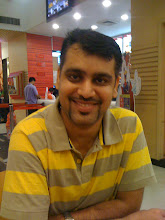Sunday, Sep 26, 2010
Five years ago, when the national urban transport policy was drafted, Indian policy makers finally agreed to follow the international best practices and engineered a lateral shift of focus to "moving people, not vehicles". And that prompted a series of new initiatives on road, from experimenting with BRT and bulk buying of quality buses to pumping in huge resources to expand the metro rail network.
The shift in the official transport philosophy despite being not fully implemented, has come in handy as the traffic management team of Delhi Police with 5,500 personnel and 1,200 volunteers in hand, is virtually struggling to convince car users to use the public transport mode atleast during the Commonwealth Games.
Both Delhi Metro and DTC have made elaborate plans to accommodate more commuters between October 3 and 14, but the main challenge in manning the 105 km-long Commonwealth Games lanes comes from the crude fact that Delhi has 70 lakh motor vehicles, which is even 35 percent more than that of Beijing.
With the prices of cars remaining almost flat for several years now, and the income levels of people living in the metro cities and their bankability moving up, the number of private vehicles on Indian roads are bound to rise. And that has raised doubts whether building more flyovers and underpasses is the right solution in tackling traffic in large Indian cities.
"We need to change our mindset and reduce the usage of private vehicles. Otherwise, no number of roads and flyovers can help. If we do the right planning, 50% of the job is done," says Dr S Gangopadhyay, director of New Delhi-based Central Road Research Institute.
Though it is too early to conclude that there would be chaos on Delhi's roads during the days of Commonwealth Games, such experiences may force the government to seriously think of bolstering public transport mode. Gaurav Gupta, managing director of Karnataka State Road Transport Corporation and a strong supporter of public transport, says how Beijing inducted 26,000 new buses to strengthen the public transport ahead of the Olympics.
"Just a laissez faire policy of letting personal vehicles increase every year would not help. Singapore has done exemplary work. Beijing's odd and even number rule to reduce vehicles on road is commendable," says Gupta. As more and more city buses like those run by KSRTC have best of the fleet, including those of Mercedes-Benz buses, and have adopted electronic ticketing machines (ETMs), travelling by bus may no longer be an irritant for most upper middle class Indian families who still prefer to travel in their private vehicles.
OP Agarwal, an urban transport adviser in the World Bank, points to the fact that a car occupies atleast six square meters of road space. "But on average, a car carries only two people. So, the space that should be allocated to it need not be more than 0.7 square metres. Therefore, a minimum of 5.3 square meters of precious road space gets wasted by each car," he says.
Significantly, Singapore is a classic example of how investment in high quality public transport system works well for a city. On the other hand, Brazil's Curitiba has demonstrated how land use plans could be perfectly integrated with transport plans. "It is necessary to review India's land use plans in such a way that more people live and work near such public transport stations. This will encourage greater use of public transport as a whole," Agarwal from the Bank adds.
Even in India, Ahmedabad's successful BRT model has kindled hopes that middle class commuters may finally leave their personal vehicles. Captain Dilip Mahajan, deputy Municipal Commissioner of Ahmedabad Municipal Corporation says: "That 30,000 people in the city are no longer using their personal vehicles demonstrates the success of BRT here. About 80,000 people use the BRT every day".
Though the BRT fiasco in Delhi has slowed down the speed of this transition from the use of private vehicles to public transport mode, there is no debate over which way the Indian traffic is finally heading towards. If Indian urban conglomerates want to be the global cities, they can't ignore perfect planning and traffic management. What the policy makers need to do now is to pick up desi success stories like Delhi Metro and the Ahmedabad BRT to formulate future action plans.
Original news source http://economictimes.indiatimes.com/news/news-by-industry/et-cetera/CWG-Delhi-Police-struggle-to-manage-traffic/articleshow/6628419.cms
Monday, September 27, 2010
Subscribe to:
Post Comments (Atom)




No comments:
Post a Comment